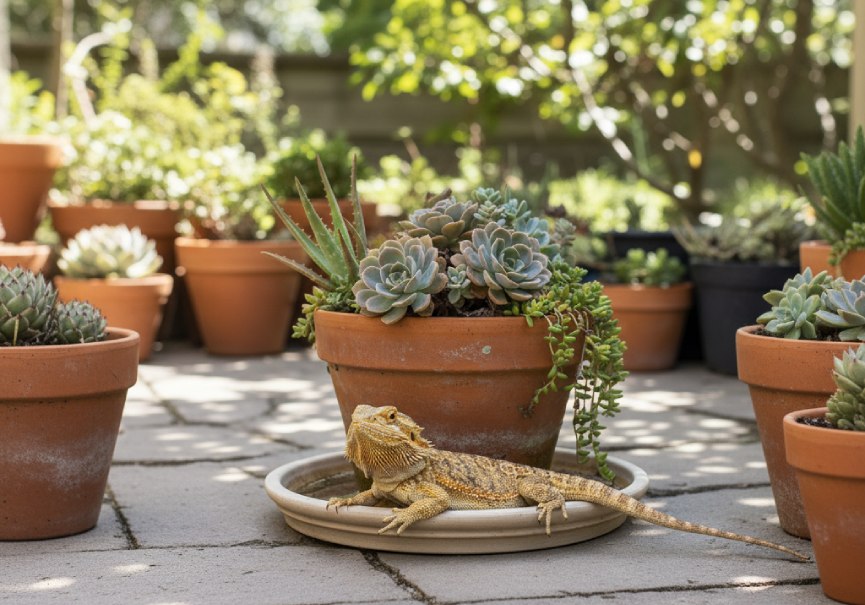Devil’s Horn Succulent (Crassula nudicaulis): A Fascinating Plant for Succulent Enthusiasts

Introduction
Succulent enthusiasts are always on the hunt for plants that stand out, species that bring both charm and character to their collections. Among these, the Devil’s Horn Succulent (Crassula nudicaulis) is a true showstopper. With its horn-like leaves, compact form, and playful yet mysterious look, this South African native has earned admiration from gardeners and collectors around the world.
But what exactly makes this plant so special? Beyond its dramatic appearance lies an intriguing blend of resilience, adaptability, and easy-going care needs, making it a must-have for both beginners and experienced succulent lovers.
In this comprehensive guide, we’ll explore the origins, taxonomy, growth habits, propagation techniques, and essential care tips for keeping your Devil’s Horn Succulent healthy, happy, and thriving.
Origins and Natural Habitat
The Devil’s Horn Succulent, scientifically known as Crassula nudicaulis, originates from South Africa, particularly from rocky and semi-arid regions. Its natural habitat features well-draining sandy soils, abundant sunlight, and low humidity conditions that have shaped its drought-resistant traits.
In these native environments, the plant’s horn-like leaves and compact rosettes serve an evolutionary purpose: they minimize water loss while maximizing light absorption. This adaptation enables the plant to thrive in intense heat and limited rainfall, making it a symbol of endurance and natural design.
Taxonomy and Classification
Understanding the taxonomic position of Crassula nudicaulis helps us appreciate its place within the diverse world of succulents.
| Classification Level | Scientific Name |
|---|---|
| Kingdom | Plantae |
| Division | Magnoliophyta |
| Class | Magnoliopsida |
| Order | Saxifragales |
| Family | Crassulaceae |
| Genus | Crassula |
| Species | Crassula nudicaulis |
The Crassula genus includes over 200 species, many of which are popular ornamentals, such as Crassula ovata (Jade Plant) and Crassula perforata (String of Buttons). Crassula nudicaulis distinguishes itself through its naked stems (as the name nudicaulis suggests) and unique horn-shaped foliage.
Morphology and Characteristics
The Devil’s Horn Succulent captivates attention through a combination of unusual shapes and textures. Below are its defining features:
Growth Habit
This perennial succulent grows in a clumping or sprawling pattern, forming compact rosettes of leaves that gradually spread outward. Mature plants typically reach 4–6 inches (10–15 cm) in height and 6–8 inches (15–20 cm) in width, perfect for container gardens or small rockeries.
Leaf Structure
The leaves are fleshy, narrow, and tubular, often curling inward or upward, creating the visual impression of small horns. This horned appearance gives the plant both its name and its personality.
Coloration
Leaves are typically a vibrant green, but under bright sunlight or mild stress, they may develop reddish or purplish edges, adding visual contrast and depth.
Flowers
During late spring to early summer, Crassula nudicaulis produces clusters of star-shaped flowers, usually white to pink in color. These blooms attract pollinators such as bees and butterflies, adding an ecological benefit to their ornamental value.
The Uniqueness of the Devil’s Horn Succulent
What truly sets this plant apart is its sculptural quality. The symmetrical rosettes and horn-like leaves create an aesthetic reminiscent of geometric art in nature. The curling leaf tips not only look intriguing but also function as water-conservation mechanisms.
Its compact growth, drought tolerance, and bold structure make it ideal for:
- Indoor collections or succulent shelves
- Rock gardens and terrariums
- Xeriscaping projects (water-efficient landscaping)
Whether placed alone in a minimalist pot or grouped with other succulents, it commands attention effortlessly.
Growing Conditions for Devil’s Horn Succulent
Light Requirements
The Devil’s Horn Succulent thrives in bright, indirect light. Position it near a south- or west-facing window where it receives 4–6 hours of sunlight daily. While it can tolerate gentle morning sun, prolonged exposure to harsh afternoon rays may cause leaf burn.
If grown indoors under low light, consider using a grow light to maintain its shape and color intensity.
Temperature
Ideal temperature range: 65°F to 80°F (18°C–27°C).
This succulent tolerates slightly cooler nights but must be protected from frost, which can damage its tissues. In winter, move it indoors or cover it during cold snaps.
Humidity
Being a desert native, Crassula nudicaulis prefers low to moderate humidity. Avoid placing it in humid areas like bathrooms. Normal indoor conditions (around 40–50% RH) are ideal.
Soil
Well-draining soil is essential. Use a cactus or succulent mix containing coarse sand, perlite, or pumice. Avoid heavy garden soil that retains moisture, as this can lead to root rot.
Watering
Follow the “soak and dry” method:
- Allow the soil to dry out completely between waterings.
- Then water thoroughly until excess drains out from the pot holes.
- Reduce watering frequency during winter dormancy.
Overwatering is the number one cause of failure with this plant. When in doubt, it’s better to underwater than overwater.
Propagation Methods
One of the joys of owning the Devil’s Horn Succulent is how easily it propagates. You can multiply your collection or share plants with friends using three main methods.
1. Propagation via Stem Cuttings
This is the most reliable and commonly used technique.
Steps:
- Choose a healthy, mature stem and cut a 4–6 inch segment using a sterilized knife.
- Let the cutting dry and callus for 2–3 days.
- Insert the cutting into a pot filled with well-draining succulent mix.
- Mist lightly until roots form (usually within 3–4 weeks).
- Once rooted, transplant into its permanent container.
2. Propagation via Leaf Cuttings
This method requires patience but works well with healthy leaves.
Steps:
- Gently twist off a firm, undamaged leaf.
- Allow it to dry for 2–4 days until the base forms a callus.
- Lay the leaf on top of moist succulent soil.
- Mist occasionally until small plantlets form at the base.
- Once roots appear, separate and replant the baby succulents.
3. Propagation via Offsets (Pups)
Mature plants produce offsets or pups that can easily be separated.
Steps:
- Gently remove the offset from the mother plant using a clean blade.
- Ensure the offset has a few roots attached.
- Pot it in a small container with succulent soil.
- Water sparingly for the first few weeks.
Repotting and Maintenance
Repotting
Repot your Devil’s Horn Succulent every 2–3 years, preferably in spring.
- Choose a slightly larger pot with drainage holes.
- Refresh the soil to restore nutrient content and aeration.
- Allow the plant to settle for a few days before watering again.
Pruning
Occasional pruning helps maintain shape and encourages new growth.
- Trim elongated stems or remove leggy growth.
- Remove any dead or damaged leaves to prevent fungal buildup.
Fertilizing
Feed sparingly. Use a diluted, balanced succulent fertilizer (half strength) once every 3–4 weeks during the active growing season (spring–summer).
Avoid fertilizing during dormancy.
Common Pests and Problems
The Devil’s Horn Succulent is hardy, but not immune. Watch out for:
- Mealybugs: Small white cotton-like clusters. Remove using alcohol-dipped cotton swabs.
- Aphids: Usually appear on new shoots; rinse with mild soapy water.
- Scale insects: Hard-shelled pests attached to stems; remove manually or use insecticidal soap.
Prevention tip: Keep good air circulation, avoid overwatering, and inspect regularly.
Popular Varieties of Crassula nudicaulis
Several cultivated varieties offer distinct colors and textures:
- Crassula nudicaulis ‘Toadstool’ – Rounder, thicker leaves forming tight rosettes.
- Crassula nudicaulis ‘Coral’ – Features coral-pink tinges on the leaves.
- Crassula nudicaulis ‘Ruby Necklace’ – Known for its deep ruby-red foliage when exposed to sunlight.
Each of these varieties adds visual diversity to your collection while retaining the plant’s characteristic horned form.
Benefits and Uses
Beyond its visual appeal, the Devil’s Horn Succulent offers practical and environmental advantages:
- Air purification: Like other succulents, it absorbs CO₂ and releases oxygen, improving indoor air quality.
- Decor versatility: Ideal for terrariums, rock gardens, or as tabletop décor.
- Low maintenance: Requires minimal watering and care, perfect for busy individuals.
- Educational value: A great specimen for studying plant morphology and drought adaptation.
FAQs About Devil’s Horn Succulent
1. How often should I water the Devil’s Horn Succulent? Ans:- Water only when the soil is completely dry, generally every 7–10 days in summer and less in winter.
2. Can Devil’s Horn Succulent tolerate direct sunlight? Ans:- Yes, but only for short periods. Prolonged exposure can cause leaf burn; filtered light works best.
3. How do I propagate Devil’s Horn Succulent? Ans:- Use stem cuttings, leaf propagation, or offsets. Allow cuttings to dry before planting.
4. What pests affect the Devil’s Horn Succulent? Ans:- Common pests include mealybugs, aphids, and scale insects. Treat early with organic pest control.
5. Can I grow it indoors? Ans:- Absolutely! It thrives indoors with sufficient bright, indirect light.
6. What does a succulent look like? Ans:- The Devil’s Horn Succulent (Crassula nudicaulis) is the plant known for its distinctive horn-like leaves.
7. How big does Crassula Devil’s Horn grow? Ans:- It remains compact, about 4–6 inches tall and 6–8 inches wide, making it perfect for small pots and arrangements.
Conclusion
The Devil’s Horn Succulent (Crassula nudicaulis) is a true botanical gem, both intriguing and easy to care for. With its distinctive horn-shaped leaves, vibrant hues, and adaptable nature, it’s no wonder this plant has captured the hearts of succulent enthusiasts worldwide.
Whether you’re growing it on a sunny windowsill or as part of a rock garden, its sculptural form and low-maintenance habits make it a rewarding addition to any collection.
By following the proper care, watering, and propagation techniques, your Devil’s Horn Succulent will flourish, proving that even the most devilishly named plants can bring angelic beauty to your home or garden.






